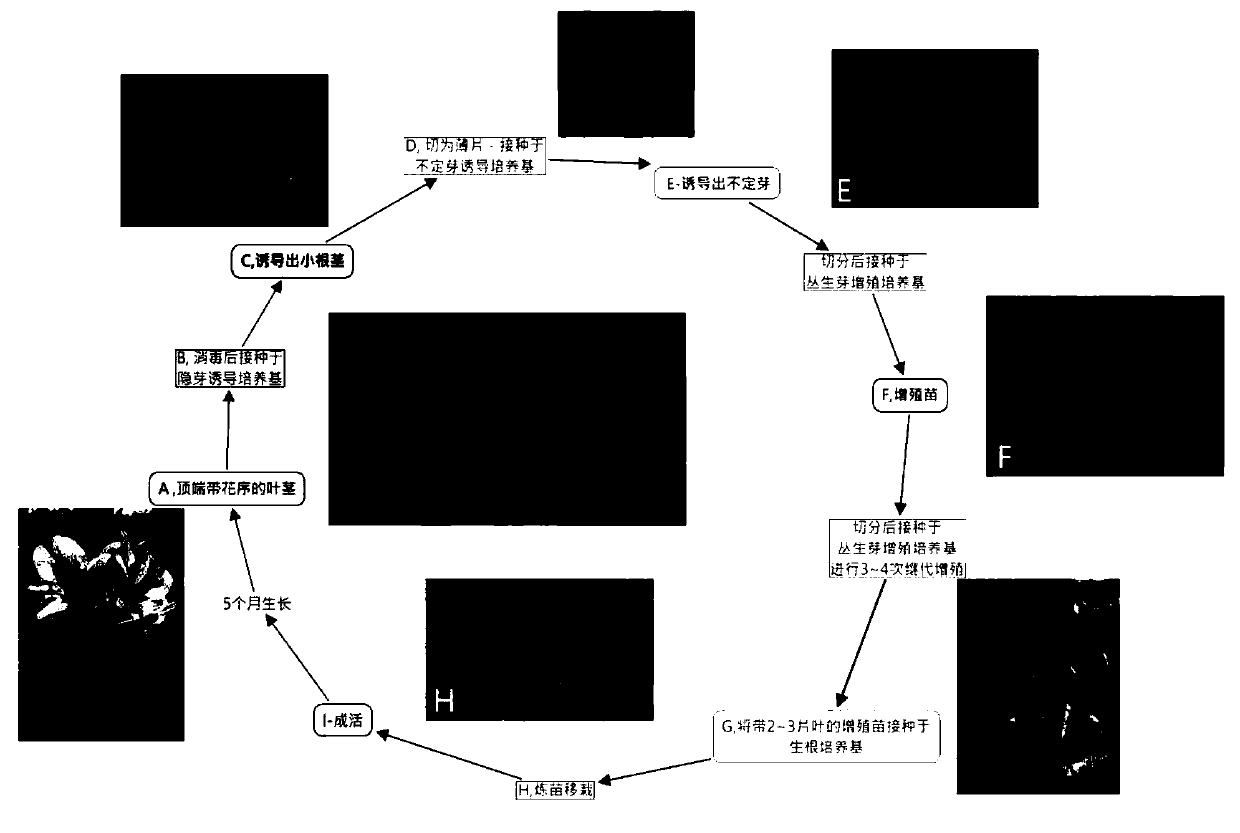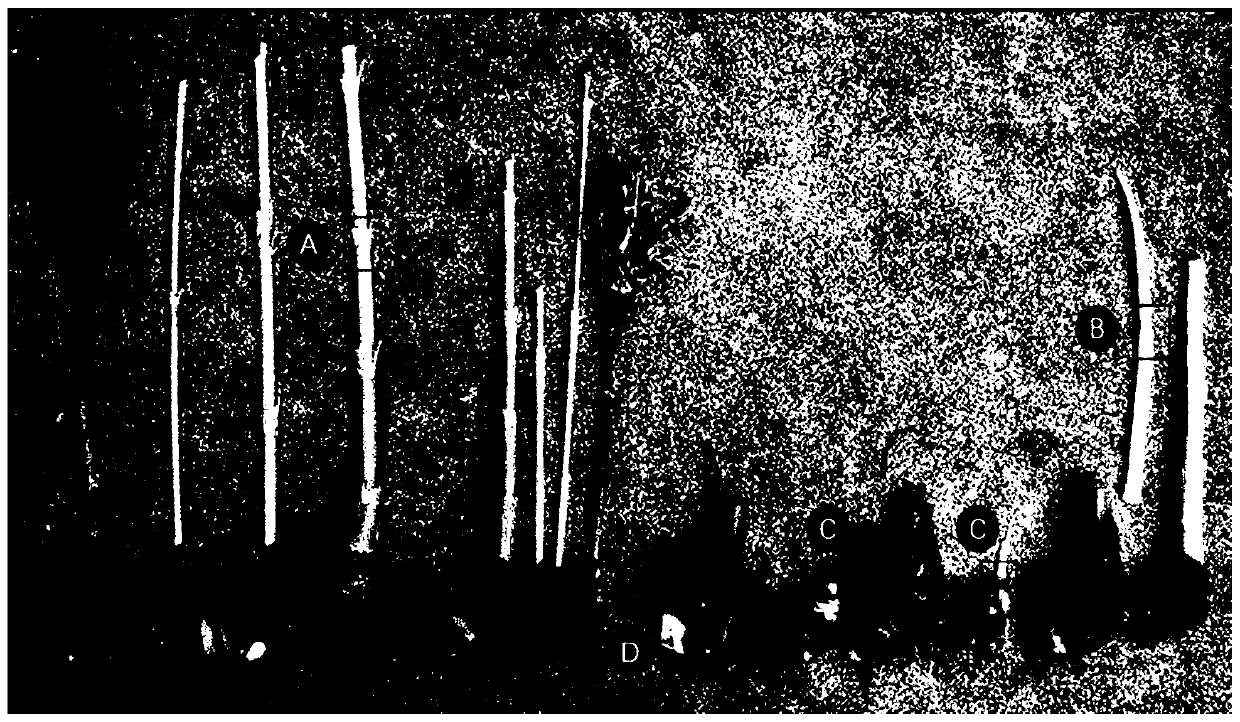Method for in-vitro rapid breeding of zingiberaceae plant with leaf stems and peduncle resting buds as explants
A technology of explants and crypto buds, applied in the field of agricultural biology, can solve the problems of low induction survival rate, high pollution rate, few sources, etc., and achieves the effects of strong operability, reduced pollution rate, and convenient steps.
- Summary
- Abstract
- Description
- Claims
- Application Information
AI Technical Summary
Problems solved by technology
Method used
Image
Examples
Embodiment 1
[0042] The preparation method of embodiment 1MS medium
[0043] The components of MS medium are shown in Table 1. Prepare 1L MS medium: Accurately weigh the various compounds described in Table 1, add appropriate amount of distilled water to dissolve, stir with a glass rod to promote dissolution, adjust the pH to 6.0 with NaOH, and finally set Capacity to 1L.
[0044] Table 1 MS medium components
[0045]
Embodiment 2
[0046] The preparation method of each culture medium of embodiment 2
[0047] 1) Induction medium for promoting cryptobud germination: take 600ml of pure water, add a certain volume of MS mother liquor, 25-35g / L sucrose and 6.5-7.5g / L agar, 3.0-5.0mg / L of BA, 1.0~3.0mg / L TDZ, 0.01~0.02mg / L NAA (BA, TDZ, NAA stock solutions are filtered through filter membrane under sterile conditions), adjust the pH value to 6.0 after distilling to 1 liter, divide After packaging, autoclave, cool to room temperature and store for later use;
[0048] 2) Medium for promoting flakes to induce adventitious buds: take 600ml of pure water, add a certain volume of MS mother liquor, 25-35g / L sucrose and 6.5-7.5g / L agar, 3.0-5.0mg / L of BA, 0.1 ~ 0.3mg / L TDZ (BA, TDZ stock solution is filtered through a filter membrane under sterile conditions), adjust the pH value to 6.0 after the volume is adjusted to 1 liter, autoclave after subpackaging, and store after cooling to room temperature spare;
[0049]...
Embodiment 3
[0051] Example 3 Rapid propagation of 'Hanyue' ginger flower in vitro with leaf-stem cryptobuds as explants.
[0052] (1) Test steps:
[0053] 1) Explant preparation: select the robust leaf stem of 'Hanyue' ginger flower with inflorescence on the top, peel off the leaf sheath layer by layer, and keep the innermost layer of leaf sheath close to the leaf stem. With a hidden bud as the center, the leaf stem is cut into 4-6 cm long stem segments.
[0054] 2) Aseptic treatment of explants and germination induction of cryptobuds: Under aseptic conditions, after soaking in 75% alcohol for 60 seconds, rinse with sterile water for 3 times, and then sterilize with 0.10% mercuric solution for 20 minutes. Rinse with bacteria water 8 times. Cut off both ends of the stem section, keep the leaf stem with the cryptobud as the node, and the upper and lower length is about 0.5 cm, use a blade and tweezers to poke the last leaf sheath to reveal the cryptobud, and inoculate it into the inductio...
PUM
| Property | Measurement | Unit |
|---|---|---|
| Length | aaaaa | aaaaa |
Abstract
Description
Claims
Application Information
 Login to View More
Login to View More - R&D
- Intellectual Property
- Life Sciences
- Materials
- Tech Scout
- Unparalleled Data Quality
- Higher Quality Content
- 60% Fewer Hallucinations
Browse by: Latest US Patents, China's latest patents, Technical Efficacy Thesaurus, Application Domain, Technology Topic, Popular Technical Reports.
© 2025 PatSnap. All rights reserved.Legal|Privacy policy|Modern Slavery Act Transparency Statement|Sitemap|About US| Contact US: help@patsnap.com



